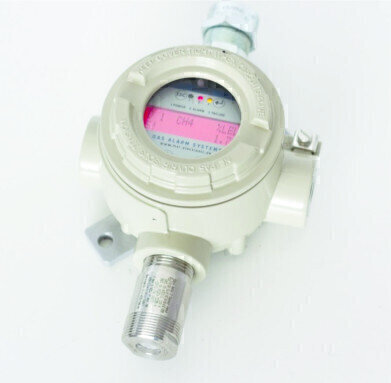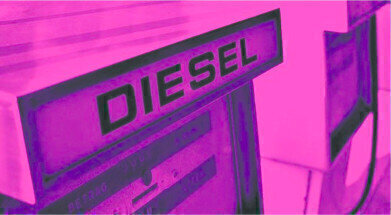Gas Detection
Gas sensors protect against explosion in Bremen tank farm
Aug 05 2020
The task of mineral oil logistics is the reliable distribution of combustible substances from the producer to the end consumer: mainly petrol and diesel fuels, kerosene, fuel oils, methanol and benzene. Distribution can take place directly ex refinery or via an intermediate tank farm using tank trucks. When tank farms are used, a high safety level of gas monitoring is required. To meet the SIL requirements, the MSR-Electronic product PolyXeta®2 with the innovative exchangeable X-Change sensor is employed detecting volatile organic hydrocarbons due to the reliable safety calibration of the sensor.
Wherever flammable or toxic gases are present, the risk potential for people is particularly high, as they often cannot be smelled or seen. Fixed gas warning systems significantly reduce these risks for people and plants. With innovative products, MSR-Electronic reliably protects lives and values against dangerous gases. The international company successfully sells products of gas warning systems via branch offices and partners worldwide. The newly developed Bremen tank storage area requires a solid safety concept meeting the strict safety requirements from the authorities.
The measuring method with integrated temperature and drift compensation stands for highest accuracy and reliability with the long service life of the sensor. The device has a standard 4-20 mA analog output and two relays with adjustable switching thresholds. In the emergency of a leakage, an early warning of the occurrence of an ignitable gas concentration and countermeasures can be initiated. Installation and maintenance are carried out by the partner Gawando Gaswarnsysteme in this project. Regular functional and system checks in accordance with BG RCI T023 ensure the reliability of the gas monitoring system and the compliance with the requirements.
Combustible gases form explosive mixtures in combination with air. There is only a limited range of gas/air concentration in which an explosive mixture occurs. An important core size for the hazard is the explosive range - the space between LEL and UEL. This area, which is defined by an upper explosive limit (UEL) and a lower explosive limit (LEL), is specific for each gas and each vapour. Outside these limits, the mixture is not flammable. Each gas reacts differently and therefore has different limits. In the past, these properties of combustible gases have led to sometimes large fires. For example, there was an expansive tank farm fire in Duisburg harbour in Germany back in 1979 and the fire at the Buncefield tank farm in Great Britain in December 2005, which was even more devastating.
Digital Edition
IET 34.2 March 2024
April 2024
Gas Detection - Biogas batch fermentation system for laboratory use with automatic gas analysis in real time Water/Wastewater - Upcycling sensors for sustainable nature management - Prist...
View all digital editions
Events
Apr 22 2024 Hannover, Germany
Apr 22 2024 Marrakech, Morroco
Apr 23 2024 Kuala Lumpur, Malaysia
Apr 23 2024 Kintex, South Korea
Apr 23 2024 Edmonton, AB, Canada



















